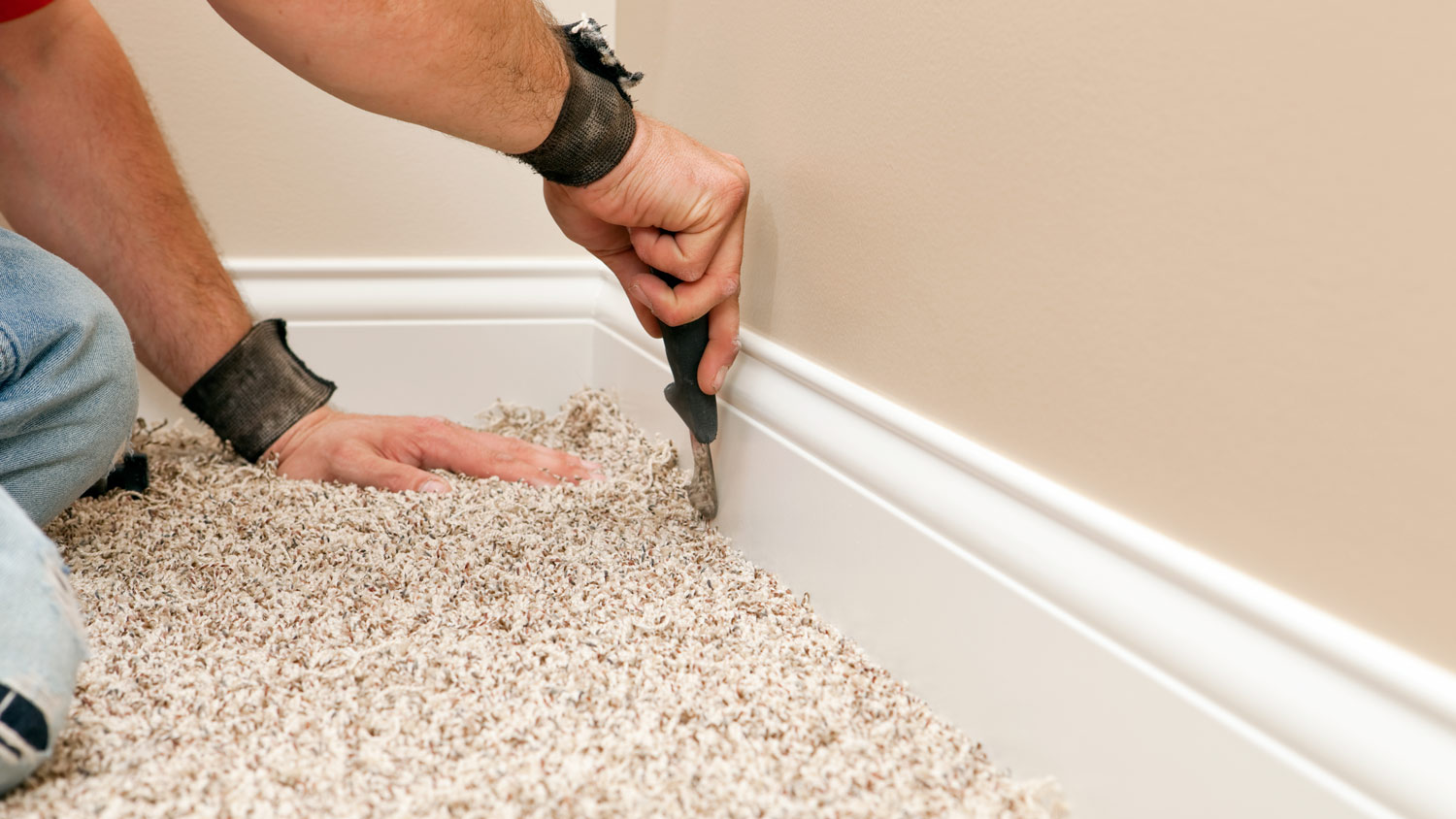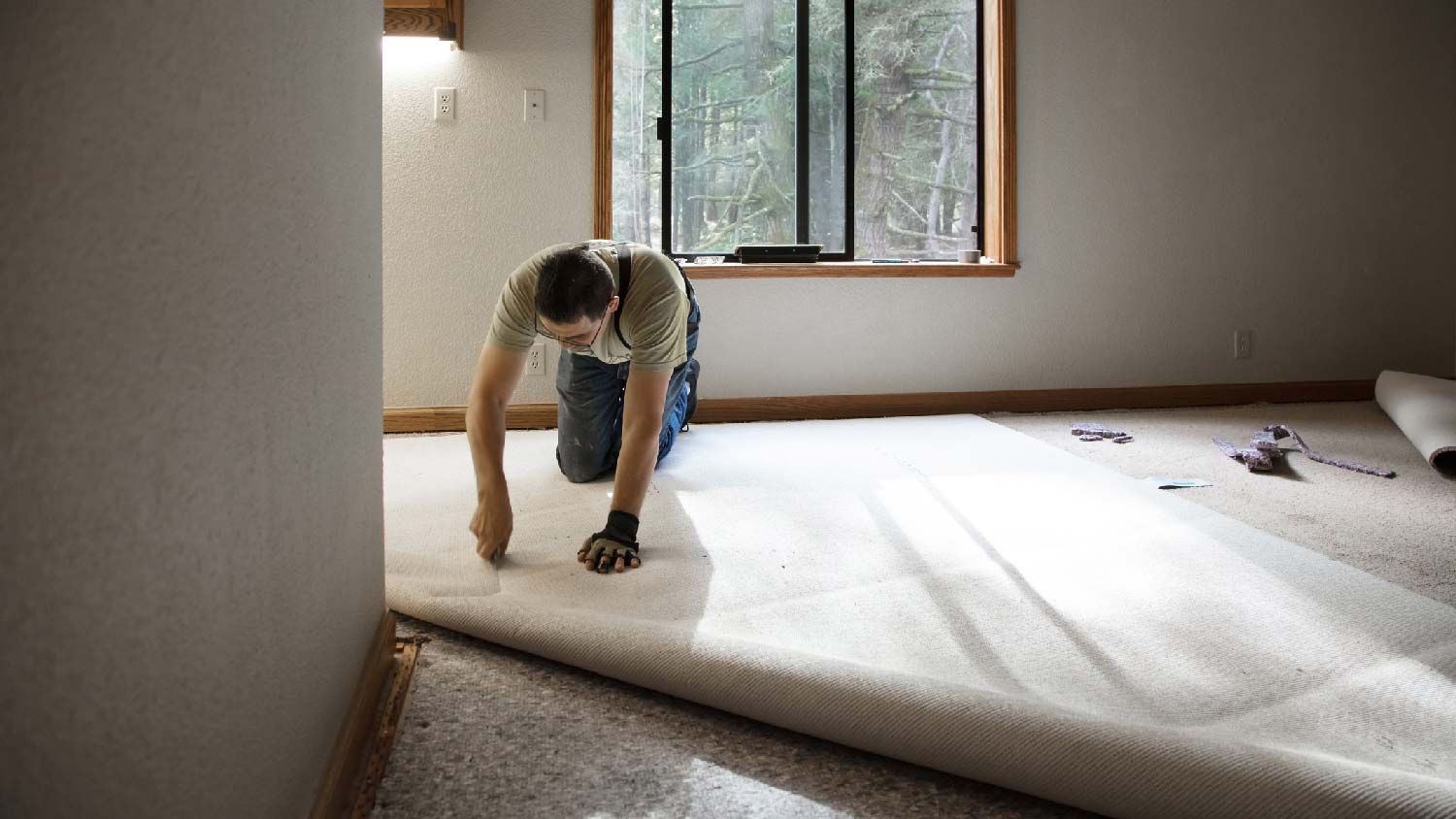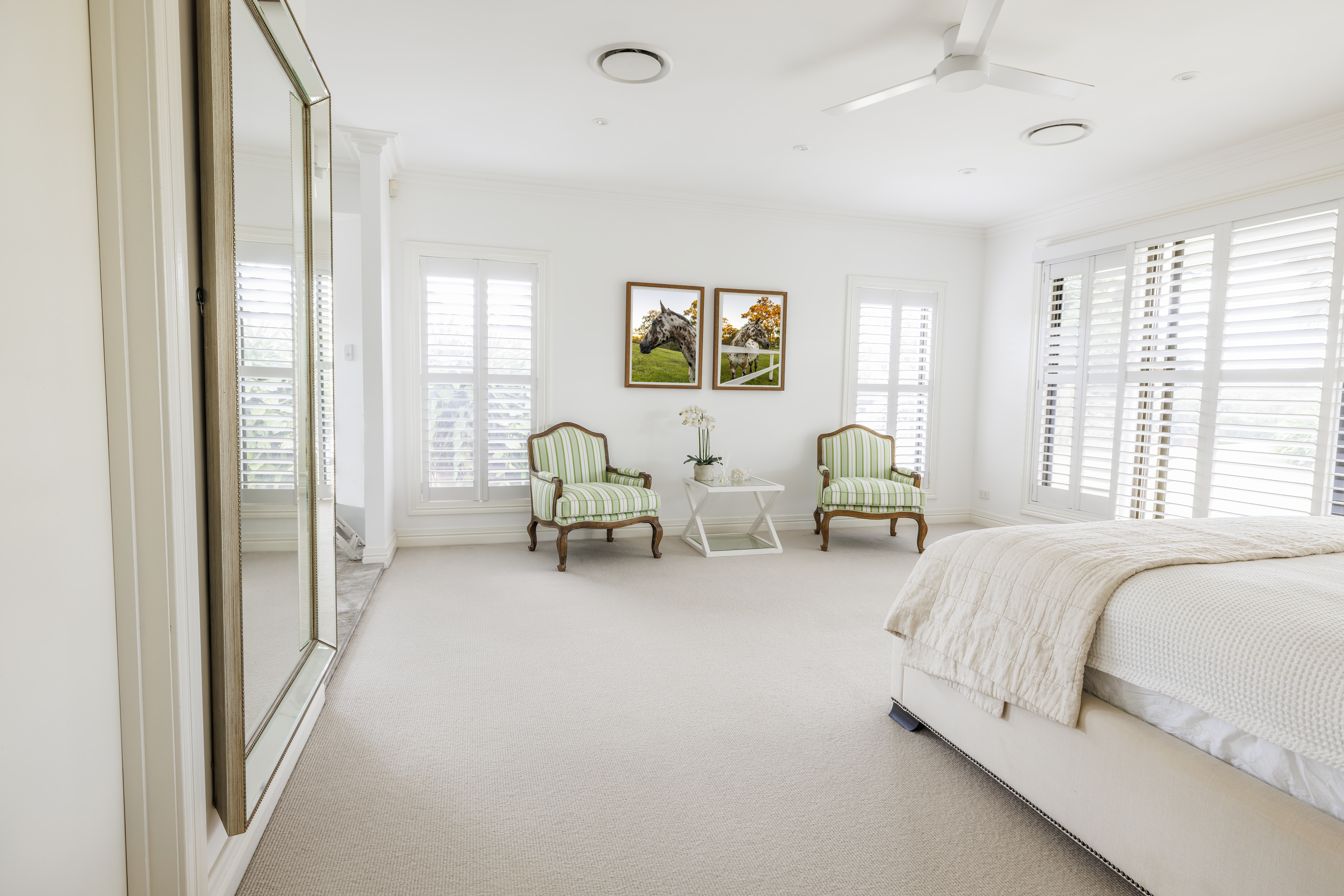
Get a clear estimate for carpet repair cost. Learn what impacts pricing, compare repair types, and find ways to save on your next carpet project.
Carpet installation costs depend on your project and location. Check with a local pro for your specific job.
Size, material type, and labor are the biggest drivers of berber carpet installation costs.
Expect to pay between $2 and $10 per square foot for materials and labor.
Professional installation costs $1 to $4 per square foot and ensures longevity and warranty protection.
Add-ons like padding or removal can impact your total cost.
Proper installation can boost home comfort and value with an ROI of 50% to 70%.
This article was created using automation technology and thoroughly fact-checked and edited by an Angi Editor in accordance with our AI policy.
Berber carpet installation costs average $1,250 for most homeowners, with an average range from $500 to $1,800. The price per square foot falls between $2 and $10, depending on material and labor. Factors like room size, carpet fiber, and installation complexity will affect your final price.
Berber carpet offers a practical, attractive solution for high-traffic homes. This guide will help you understand costs, options, and tips to get the most value from your berber carpet installation project.
Understanding what drives berber carpet installation cost can help you plan and budget more effectively. Let’s look at the main components that influence pricing.
The size of your project is the single largest factor in berber carpet installation cost. Installers base their estimates on the total square footage to be covered, so larger rooms or multiple spaces will raise your final bill.
Bedrooms, living rooms, and whole-home installations each come with their own cost implications. Some installers require a minimum project size, which can affect pricing for smaller jobs. If you’re carpeting several rooms or your entire home, you may qualify for bulk pricing or discounts.
| Area Size (Sq. Ft.) | Room Type | Average Cost | Average Cost Range |
|---|---|---|---|
| 100 | Small bedroom, closet | $600 | $200–$1,000 |
| 250 | Medium bedroom, office | $1,500 | $500–$2,500 |
| 400 | Large living room, master suite | $2,400 | $800–$4,000 |
| 1,000 | Multi-room, basement | $6,000 | $2,000–$10,000 |
| 2,000 | Whole home | $12,000 | $4,000–$20,000 |
Labor is a significant portion of berber carpet installation cost. Flooring contractors or specialized carpet installers handle most jobs. Labor can be charged per square foot at $1 to $4, hourly at $40 to $80, or as a flat project fee. Some companies have a minimum service fee, especially for small rooms. Costs can vary by region, with urban areas seeing higher rates.
Complex jobs—such as installing on stairs, in oddly shaped rooms, or moving large furniture—require more time and skill, increasing labor costs. Labor charges often cover subfloor preparation, old carpet removal, installation, and cleanup, but always confirm the details with your installer.
Permits are not usually required for residential berber carpet installation, but exceptions exist. Multi-family buildings, condos, or commercial spaces may need permits to meet fire, safety, or soundproofing codes. Permit costs range from $50 to $200 if needed. Always check with your local building department or HOA before starting your project to avoid unexpected fees or delays.
Additional features can raise your berber carpet installation cost but also improve comfort and performance. Carpet padding or underlayment costs $0.50 to $1.50 per square foot and enhances both comfort and durability. Upgrades like moisture barriers, soundproofing, or hypoallergenic padding offer extra benefits at a higher price.
Customizations such as decorative borders, patterns, or transitions to other flooring types add complexity and cost. Installing berber carpet on stairs or landings can increase labor charges by $3 to $15 per step. Fees for moving or storing furniture may also apply, so ask your installer what's included.
Several other factors can influence your total berber carpet installation cost:
Project complexity: Odd-shaped rooms, closets, built-ins, or multiple levels require extra work.
Accessibility: Limited access, elevator use, or many stairs can increase labor time and costs.
Site prep: Subfloor repairs, moisture mitigation, or removal of old flooring may incur extra charges.
Delivery fees: Some installers charge to deliver carpet and materials to your home.
Post-installation cleanup: Disposal of old carpet or debris might not be included.
Design or consultation: Custom layouts or design services can add to your bill.
Inspection costs: Subfloor or moisture inspections may be necessary for some homes.
Beyond the upfront installation, there are several ongoing and one-time expenses to keep in mind for berber carpet.
Most berber carpets come with manufacturer warranties covering defects, wear, and stains for five to 20 years. Installer warranties on workmanship may last one to three years. Extended warranties or service plans can be purchased for an extra $100 to $500, depending on coverage. Investing in a good warranty can help protect your carpet and reduce long-term repair or replacement costs.
Maintaining berber carpet involves regular cleaning and occasional stain protection treatments. Expect to pay $50 to $150 per year for basic care, with professional carpet cleaning costing $100 to $300 per visit.
The lifespan of berber carpet varies by fiber: nylon and olefin last 10 to 15 years, while wool can last 20 years or more. Berber carpet can also improve insulation, potentially reducing energy bills by 5% to 15%.
To keep berber carpet looking its best, vacuum frequently and arrange for deep cleaning every 12 to 18 months. Annual maintenance costs range from $50 to $300, depending on the level of service.
Common carpet repairs, such as patching, seam repair, or re-stretching, cost $100 to $400 per incident. Prompt attention to stains and regular upkeep will help extend your carpet’s life and minimize future expenses.
Sales tax applies to berber carpet installation cost in most states, often between 5% and 10%. In some areas, labor is also taxable. Be sure to ask your installer whether their quote includes tax so you can accurately budget for your project.
Homeowners’ insurance may cover accidental damage to new berber carpet, but check your policy details. If you install high-value wool or custom carpet, consider an insurance rider for added protection. Reputable installers should carry liability insurance to cover accidental damage during installation—ask to see proof before work begins.
If you’re handy and want to save on berber carpet installation cost, you might consider a DIY approach. You’ll save $1 to $4 per square foot on labor, but installation is physically demanding and requires skill for professional-quality results.
DIY berber carpet installation requires purchasing materials, renting or buying tools, and investing significant time and effort. Materials (carpet and padding) cost $3 to $12 per square foot. Tools like a knee kicker, carpet stretcher, and utility knife add $100 to $400 to your total.
DIY installation risks include improper stretching (leading to wrinkles), poor seams, or voided warranties if not installed to manufacturer specs. Safety hazards—such as handling sharp tools or moving heavy furniture—should be taken seriously.
Expect to spend a full weekend on a single room, while pros can complete the job in one to two days. In the long run, professional installation often delivers better results and longer carpet life.
At some point, you may need to decide between repairing or replacing your berber carpet. Here’s how to weigh your options.
Minor issues like small stains, tears, or loose seams can often be repaired, especially if the carpet is relatively new and still under warranty. If your berber carpet has extensive wear, water damage, or looks outdated, replacement is the better investment. Consider the age of your carpet and whether repairs are covered by warranty. Use the 50% rule: if repairs cost more than half the price of replacement, opt for new carpet.
Common berber carpet repairs—patching, seam repair, or re-stretching—cost $100 to $400 each. Replacing carpet in a single room averages $800 to $4,000, while a whole-home replacement may reach $4,000 to $20,000. While repairs are less expensive upfront, new carpet offers a fresh look, improved comfort, and a longer lifespan, delivering better value in the long run.
Installing berber carpet can be a smart investment, especially if you’re upgrading worn or outdated flooring.
Homeowners can expect a return on investment (ROI) of 50% to 70% from new berber carpet installation. Fresh, clean carpet enhances your home’s appeal to buyers, making it easier to sell and potentially increasing your sale price.
Compared to other flooring options, berber carpet offers a cost-effective way to improve comfort, insulation, and aesthetics. High-quality materials and professional installation deliver the best ROI, especially in well-maintained homes or competitive real estate markets. Additional benefits include noise reduction, improved insulation, and a welcoming look.
Consider these cost-saving strategies to make your berber carpet installation project more budget-friendly:
Shop for berber carpet during sales or off-peak seasons for discounts.
Get multiple quotes from local carpet installers to compare prices and services.
Choose budget-friendly berber carpet materials that balance cost and durability.
Remove old carpet or move furniture yourself to save on labor fees.
Opt for standard installation patterns instead of custom designs.
Consider installing berber carpet in high-traffic areas only, not the whole home.
Maintain your carpet properly to extend its lifespan and delay replacement.
Home is the most important place on earth, which is why Angi has helped more than 150 million homeowners transform their houses into homes they adore. To help homeowners with their next project, Angi provides readers with the most accurate cost data and upholds strict editorial standards. We extensively research project costs to develop the pricing data you see, so you can make the best decisions for you and your home. We rely on reputable sources, including the U.S. Bureau of Labor Statistics, academic journals, market studies, and interviews with industry experts—all to ensure our prices reflect real-world projects.
Want to help us improve our cost data? Send us a recent project quote to [email protected]. Quotes and personal information will not be shared publicly.
From average costs to expert advice, get all the answers you need to get your job done.

Get a clear estimate for carpet repair cost. Learn what impacts pricing, compare repair types, and find ways to save on your next carpet project.

Carpet padding makes your carpet feel extra comfortable and protects your floors from damage, but how much does carpet padding cost? Let’s look at the numbers.

The cost to carpet stairs depends on the number of stairs, material choice, and staircase type. Read on to calculate your project expenses

Carpet padding helps the carpet last longer and makes it more comfortable, among other benefits. If you’re wondering whether you need carpet padding, we have answers.

Want fluffy floors but not those large and slippery area rugs or custom cuts from expensive rolls of carpet? Learn all about types of carpet tiles.

Wool carpet is a modern luxury, but it’s not right for every room. This guide will walk you through wool carpet pros and cons.